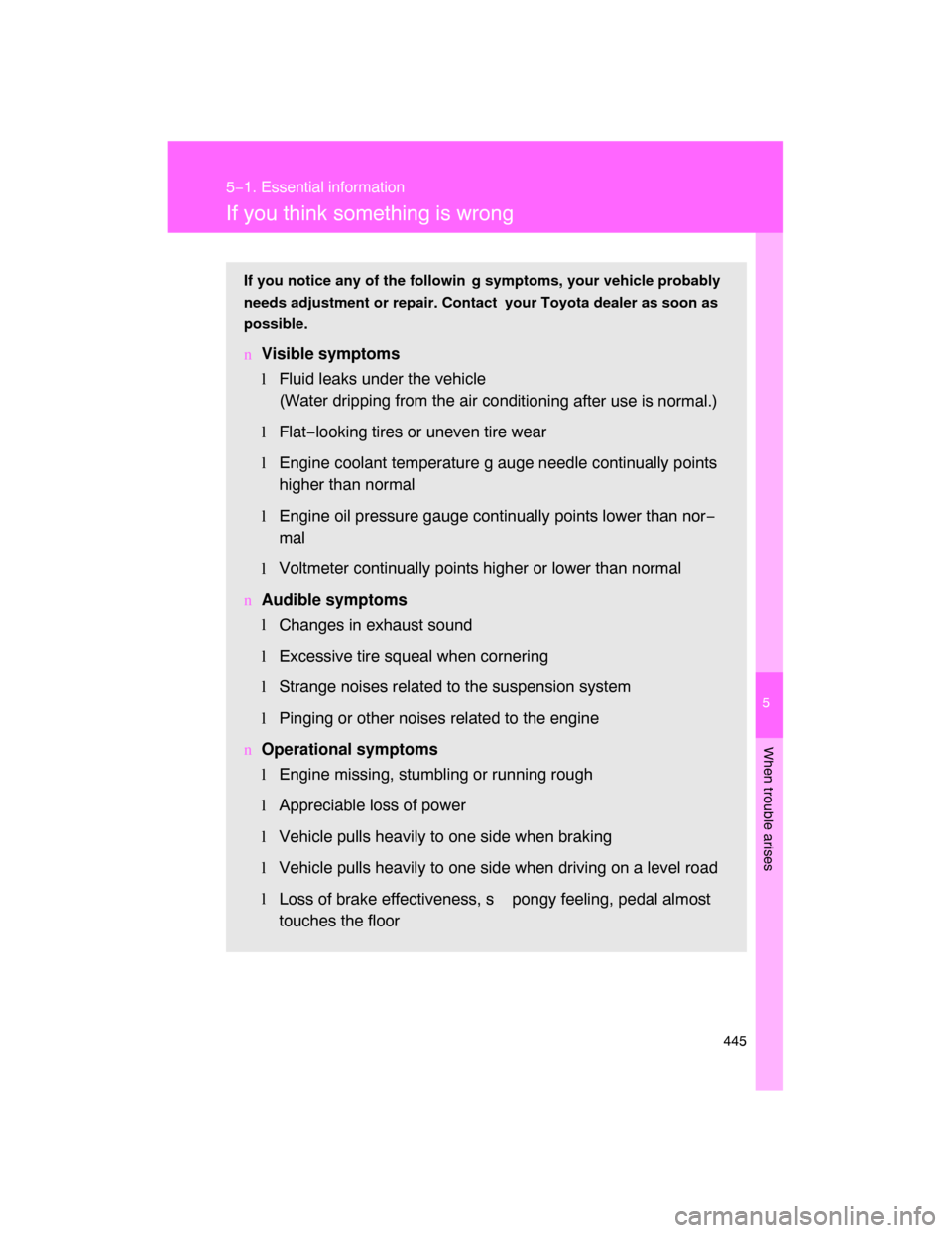Page 159 of 531
161
2−2. Instrument cluster
2
When driving
Instrument panel light control
The brightness of the instrument panel lights can be adjusted.
Darker
Brighter Odometer and trip meter
Odometer: Displays the total distance the vehicle has been driven.
Trip meter: Displays the distance the vehicle has been driven since the
meter was last reset. Trip meters A and B can be used to record and
display different distances independently.
Engine oil pressure gauge
Displays the engine oil pressure.
Odometer/trip meter and trip meter reset button
Switches between odometer and trip meter displays. Pushing and hold−
ing the button will reset the trip meter when the trip meter is being dis−
played.
Page 160 of 531
162 2−2. Instrument cluster
NOTICE
nTo prevent damage to the engine and its components
lDo not let the indicator needle of the tachometer enter the red zone, which
indicates the maximum engine speed.
lThe engine may be overheating if the engine coolant temperature gauge is
in the red zone (“H”). In this case, immediately stop the vehicle in a safe
place, and check the engine after it has cooled completely. (
P. 488)
nWhile driving
lWhen the voltmeter indicates more than 19 V or less than 9 V, the battery
may be malfunctioning. Have your vehicle checked at your Toyota dealer.
l
When the engine oil pressure gauge does not work properly, immediately
stop the engine and contact your Toyota dealer.
Page 439 of 531

5
When trouble arises
445
5−1. Essential information
If you think something is wrong
If you notice any of the followin g symptoms, your vehicle probably
needs adjustment or repair. Contact your Toyota dealer as soon as
possible.
nVisible symptoms
lFluid leaks under the vehicle
(Water dripping from the air cond
itioning after use is normal.)
lFlat−looking tires or uneven tire wear
lEngine coolant temperature g auge needle continually points
higher than normal
lEngine oil pressure gauge continually points lower than nor−
mal
lVoltmeter continually points higher or lower than normal
n
Audible symptoms
l
Changes in exhaust sound
lExcessive tire squeal when cornering
l
Strange noises related to the suspension system
l
Pinging or other noises related to the engine
nOperational symptoms
l
Engine missing, stumbling or running rough
l
Appreciable loss of power
lVehicle pulls heavily to one side when braking
l
Vehicle pulls heavily to one side when driving on a level road
l
Loss of brake effectiveness, s pongy feeling, pedal almost
touches the floor
Page 456 of 531
462 5−2. Steps to take in an emergency
nResetting the tire pressure warning data
After adjusting the tire inflation pressure, be sure to initialize the data.
(P. 393)
If the message remains on, the system may have malfunctioned. Have the
vehicle inspected by your Toyota dealer as soon as possible.
nWarning messages in the cruise control mode
In the following instances, there is a possibility that the approach warning will
not illuminate even when vehicle−to−vehicle distance is closing.
lWhen the speed of the vehicle ahead matches or exceeds your vehicle’s
speed.
lWhen the vehicle ahead is traveling at an extremely slow speed.
lImmediately after the cruise control speed has been set.
l
At the instant the accelerator is applied.
NOTICE
nEngine oil maintenance message
The warning message is based on the projected driving range after engine
oil maintenance message is reset.
The system does not monitor the purity of the engine oil.
Page 505 of 531

512 6−1. Specifications
Warning: The temperature grades for this tire are established for a
tire that is properly inflated and not overloaded.
Excessive speed, underinflation, or
excessive loading, either sepa−
rately or in combination, can cause heat buildup and possible tire fail−
ure.
Glossary of tire terminology
Tire related term Meaning
Cold tire inflation
pressureTire pressure when the vehicle has been
parked for three hours or more, or has not
been driven more than 1 mile or 1.5 km under
that condition
Maximum inflation
pressureThe maximum cold inflated pressure to which a
tire may be inflated, shown on the sidewall of
the tire
Recommended
inflation pressureCold tire inflation pressure recommended by a
manufacturer.
Accessory weightThe combined weight (in excess of those stan−
dard items which may be replaced) of trans−
mission, power steering, power brakes, power
windows, power seats, radio and heater, to the
extent that these items are available as factory−
installed equipment (whether installed or not)
Curb weightThe weight of a motor vehicle with standard
equipment, including the maximum capacity of
fuel, oil and coolant, and if so equipped, air
conditioning and additional weight optional
engine
Maximum loaded
vehicle weight
The sum of:
(a) Curb weight
(b) Accessory weight
(c) Vehicle capacity weight
(d) Production options weight
Page 516 of 531
523
6
Vehicle specifications
6−3. Initialization
Items to initialize
ItemWhen to initialize Reference
Engine oil mainte−
nance dataAfter changing engine oil P. 380
Tire pressure warning
system�When rotating the tires on vehicles
differing with front and rear tire infla−
tion pressures.
�When changing the tire inflation
pressure by changing traveling
speed or load weight, etc.
�When changing the tire size.
P. 393
The following items must be init ialized for normal system operation
in cases such as after the battery is
reconnected, or maintenance is
performed on the vehicle.
Page 531 of 531
540
GAS STATION INFORMATION
Auxiliary catch lever
P. 374
Fuel filler door
P. 8 9
Hood lock release lever
P. 374
Fuel filler door opener
P. 8 9
Tire inflation pressure
P. 502
Fuel tank capacity24.6 gal. (93 L, 20.5 lmp.gal.)
Fuel type
Unleaded gasoline only P. 90, 496
Cold tire inflation
pressure
P. 502
Engine oil capacity
drain and refill
(Reference)qt. (L, Imp.qt.)
With filter 7.4 (7.0, 6.2)
Without filter 7.0 (6.6, 5.8)
Engine oil type
“Toyota Genuine Motor Oil” or equivalent
Oil grade: ILSAC multigrade engine oil P. 497
Recommended oil viscosity: SAE 0W−20, 5W−20